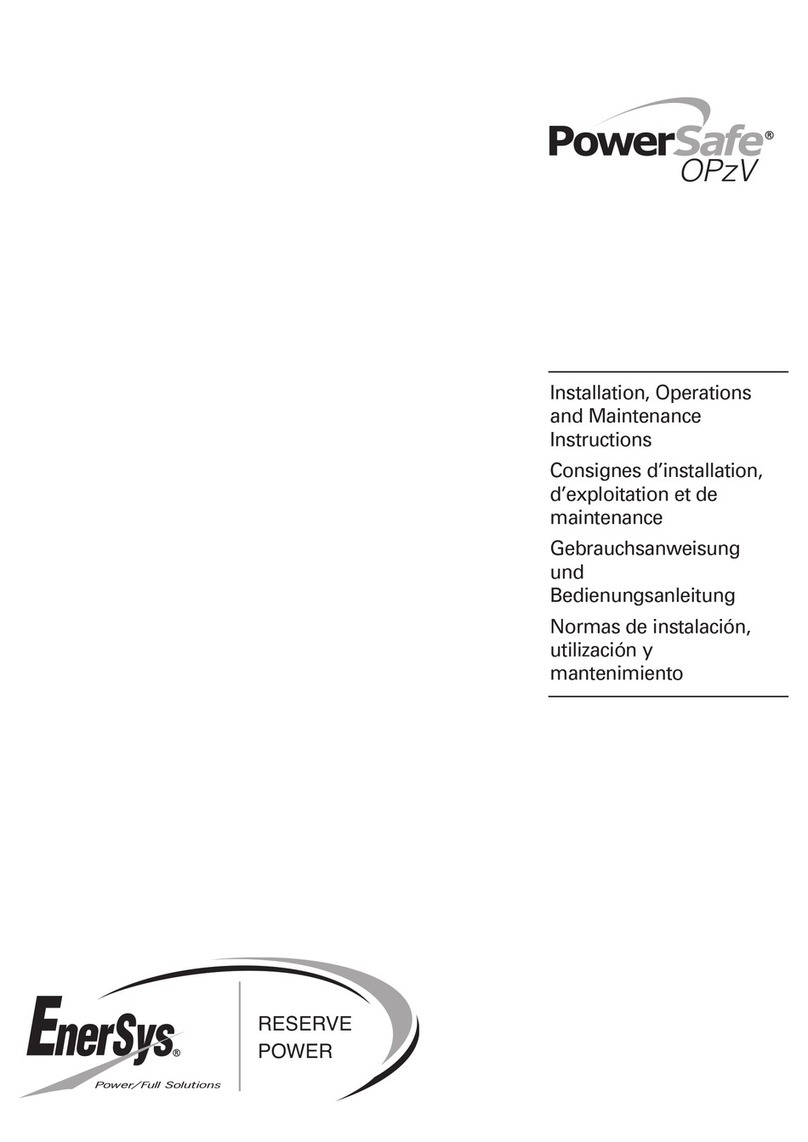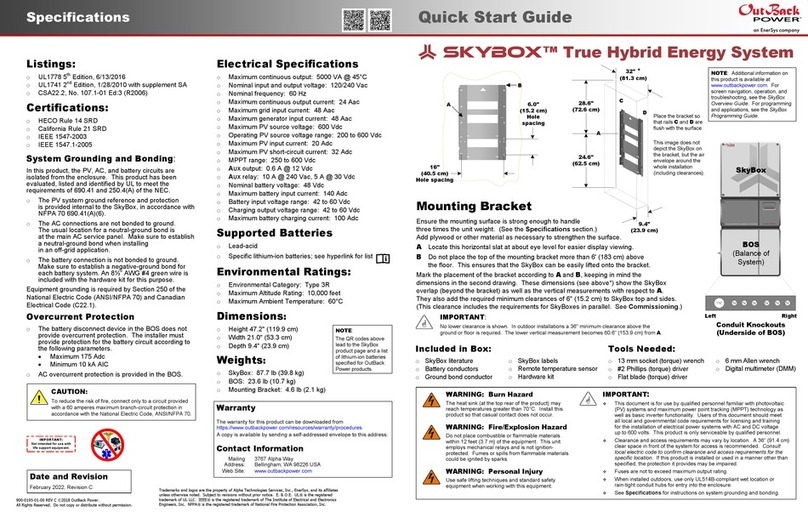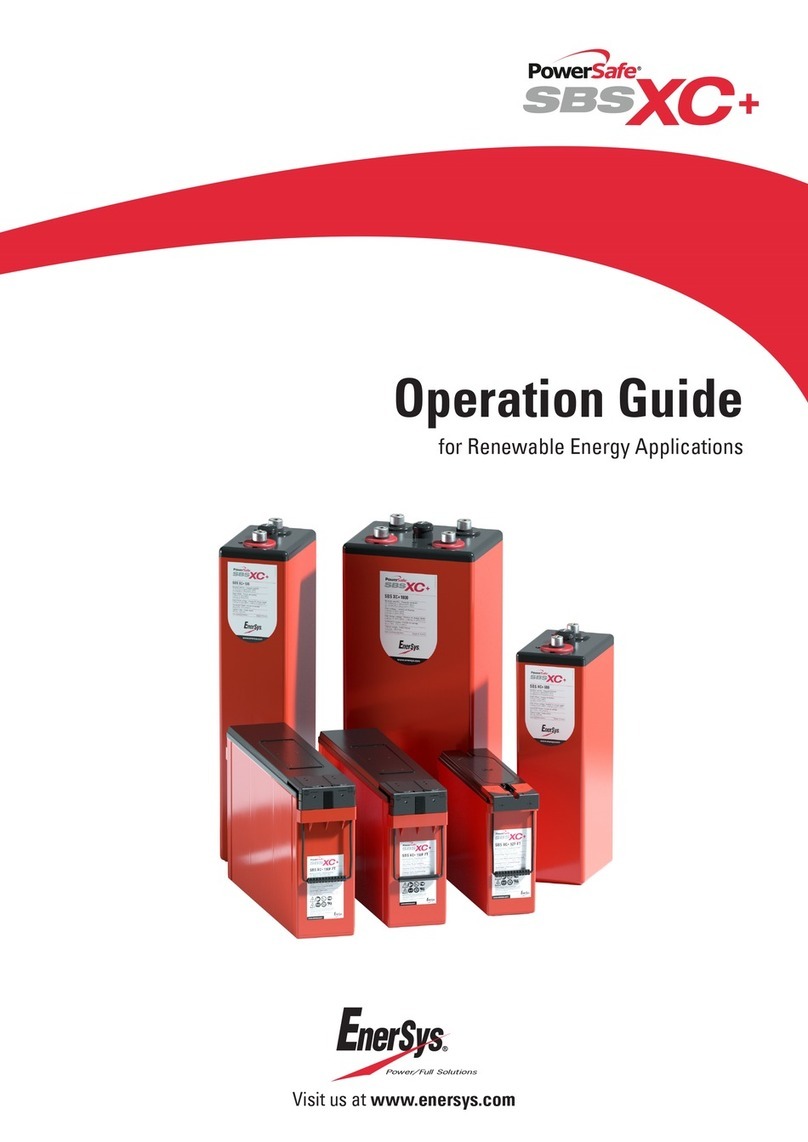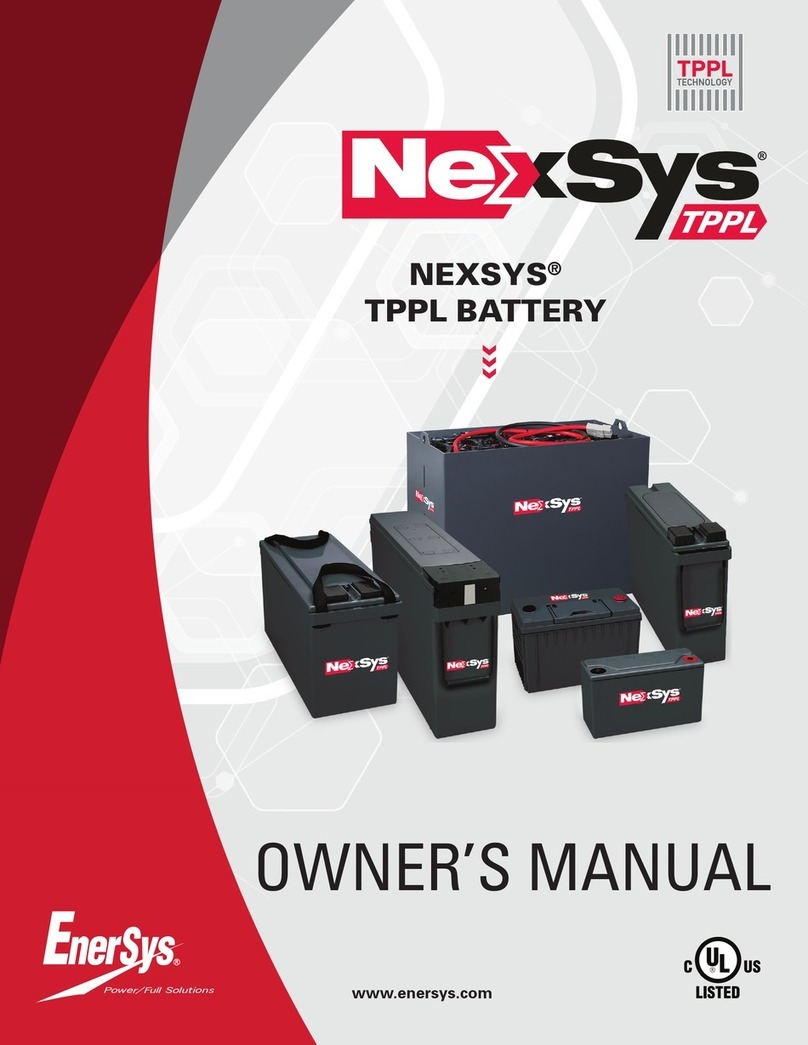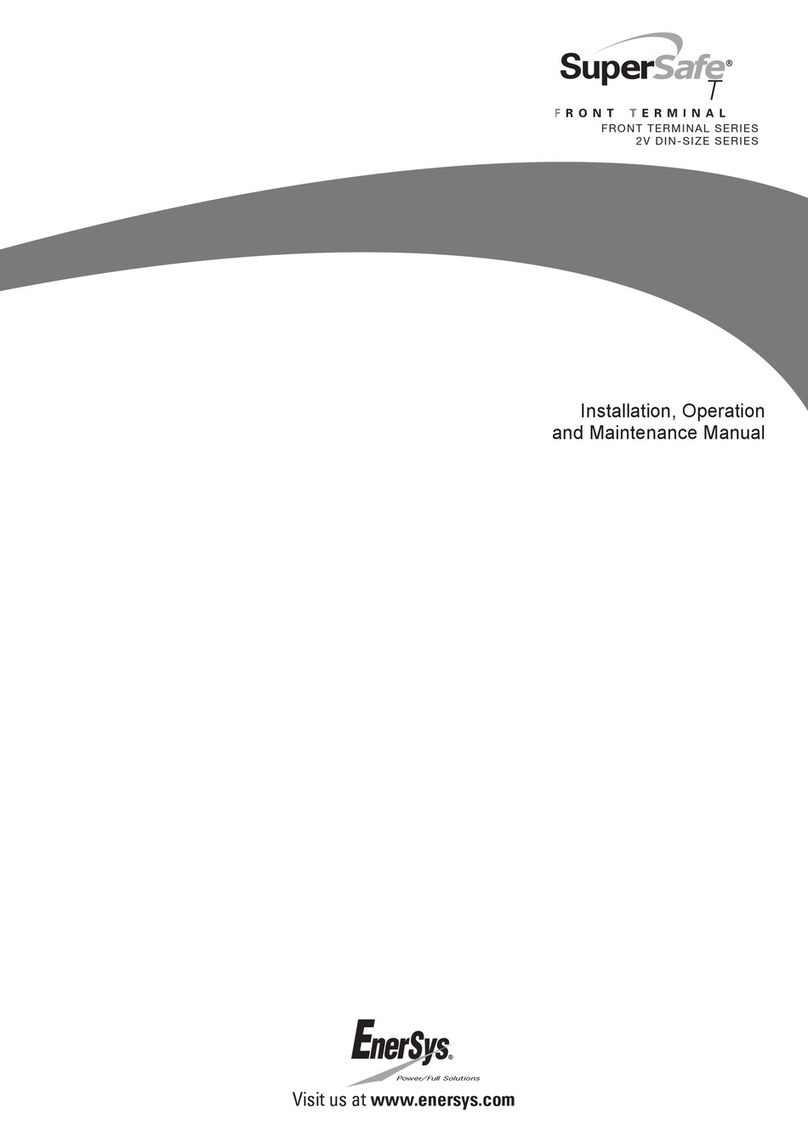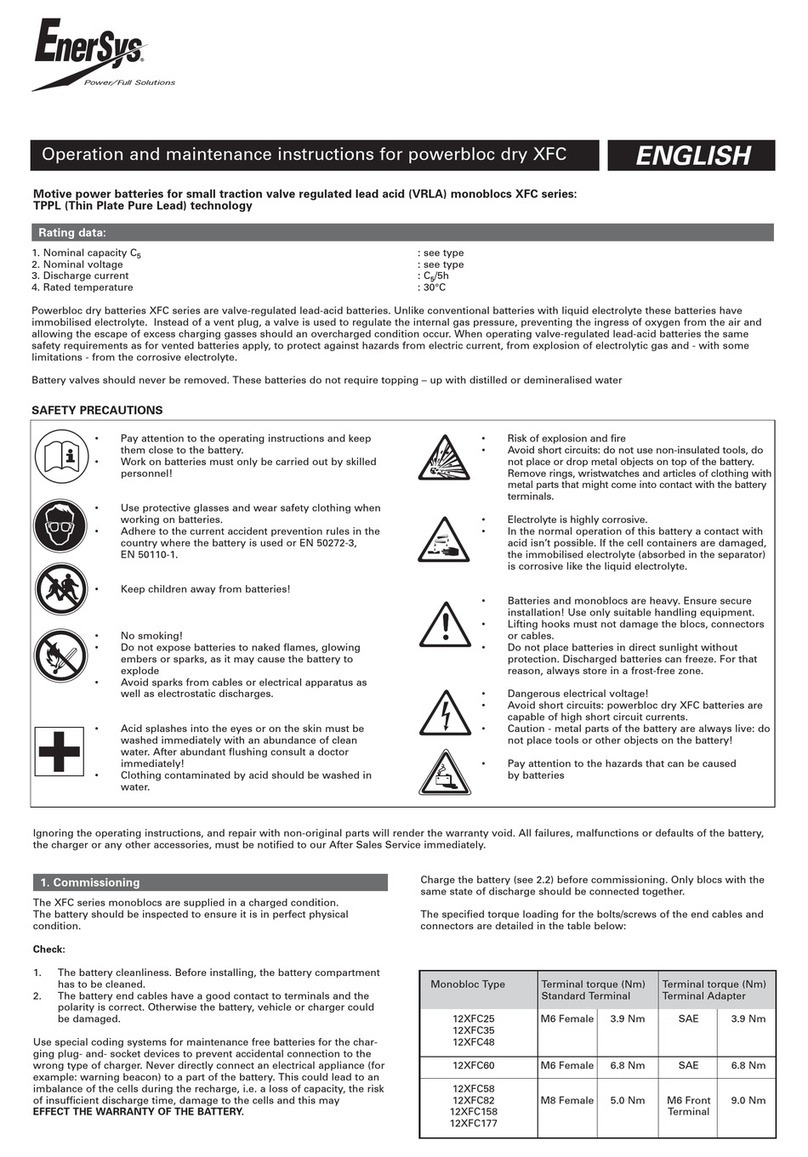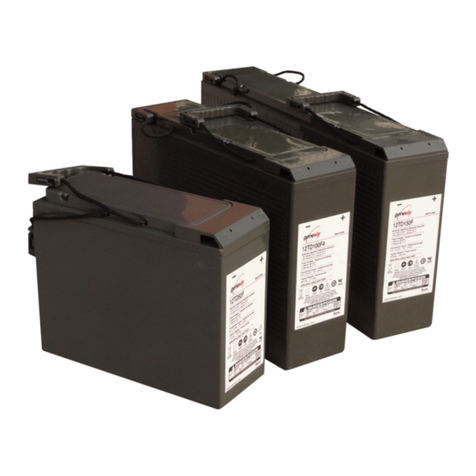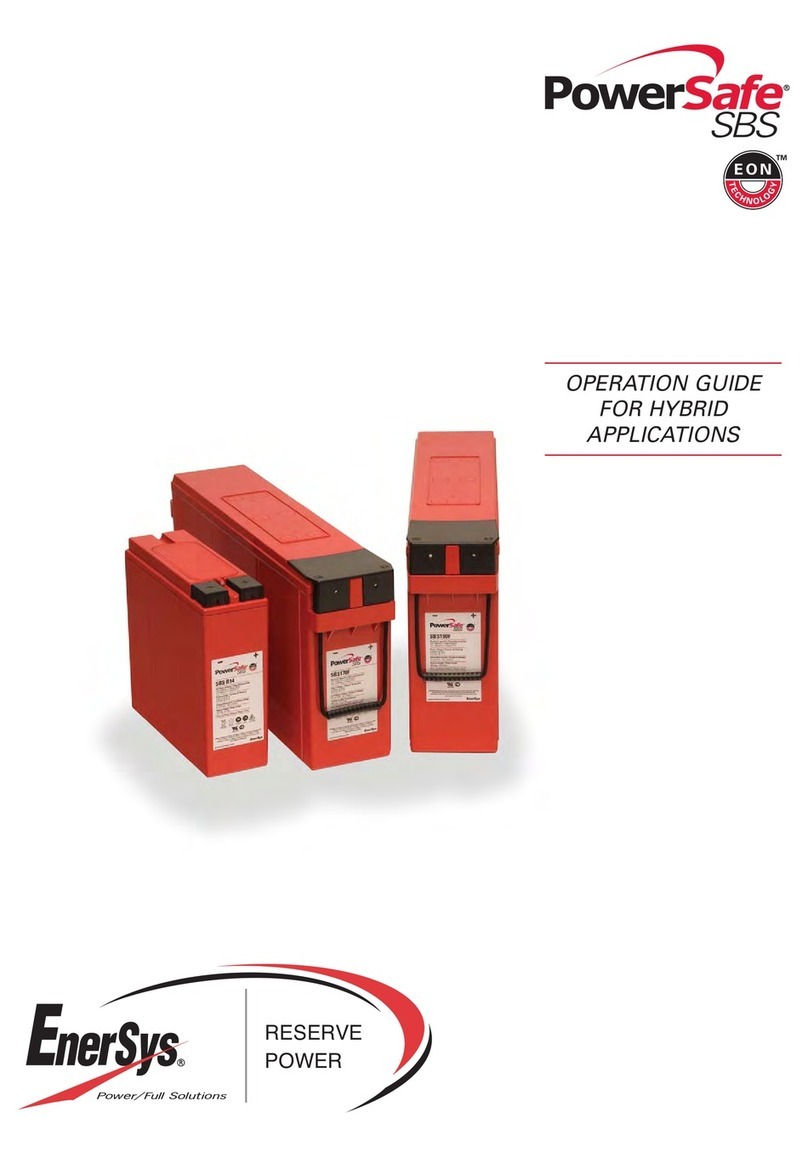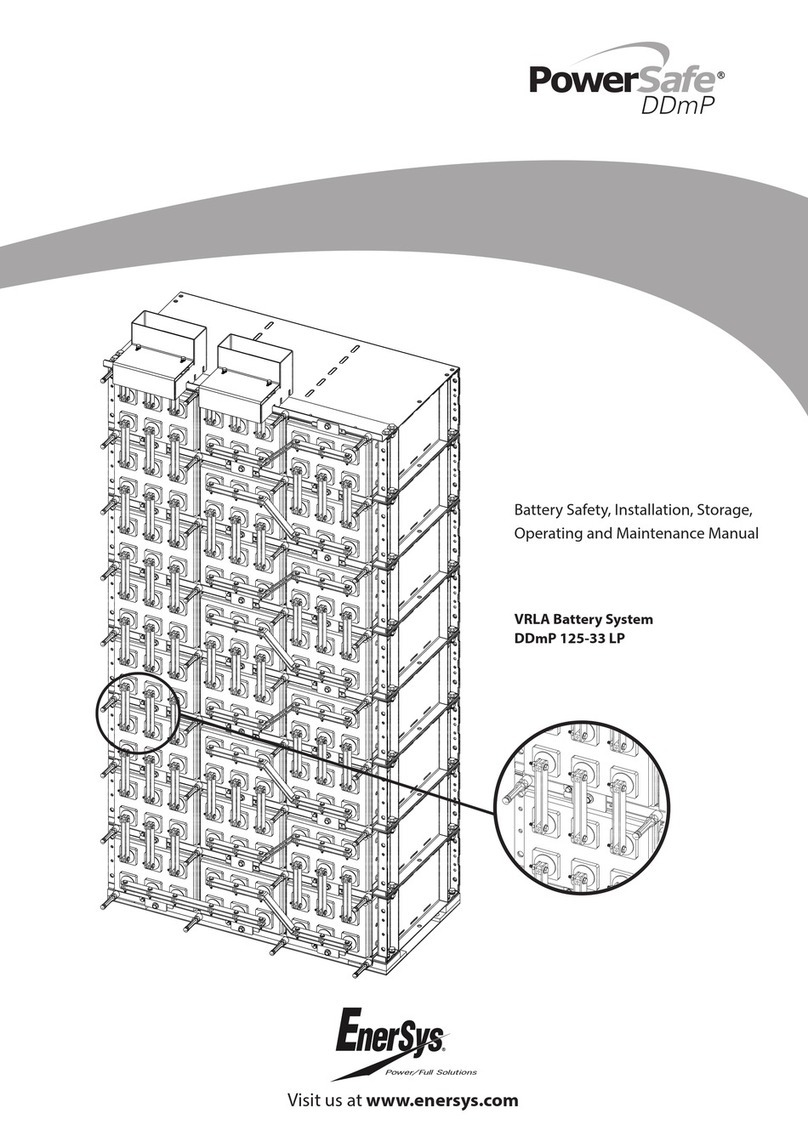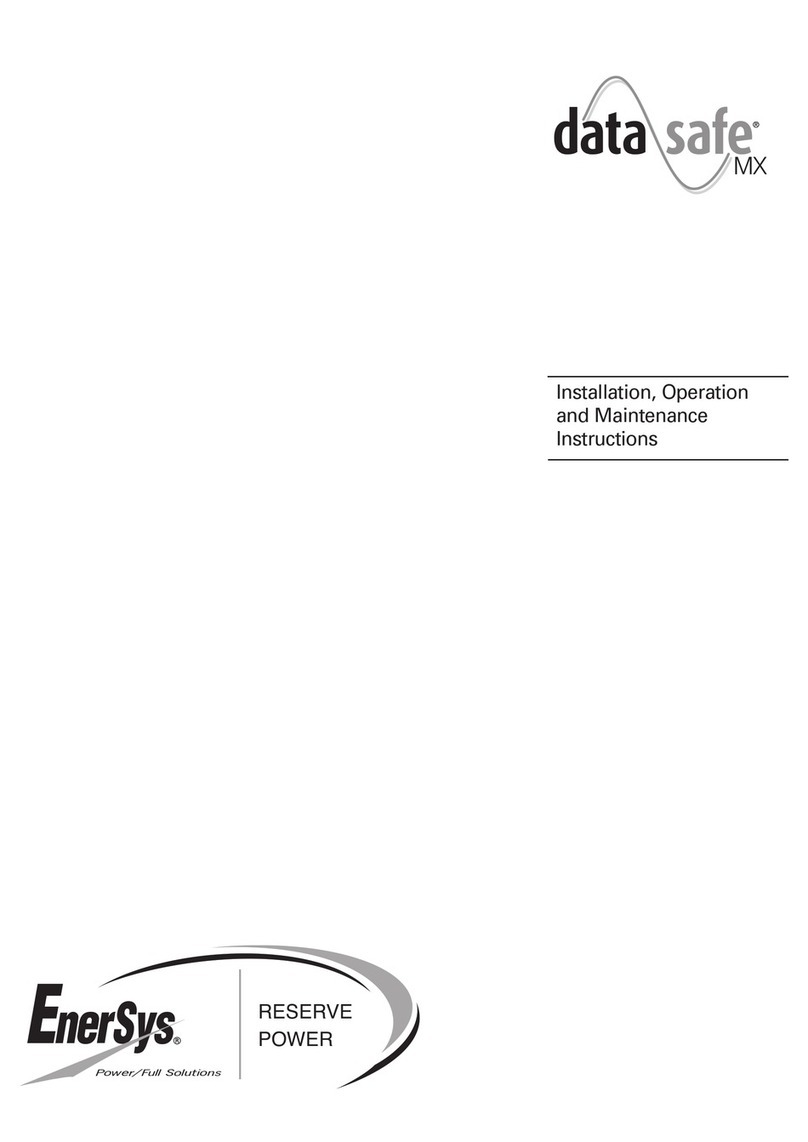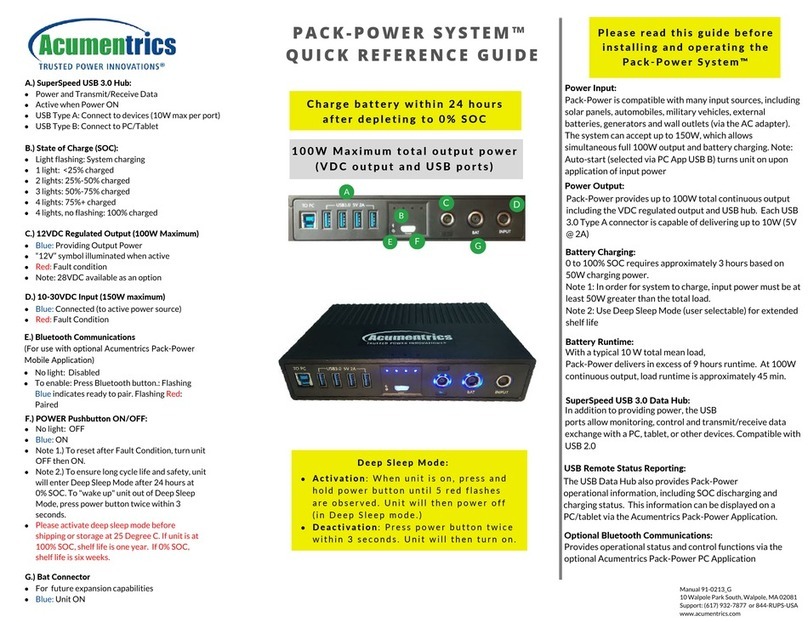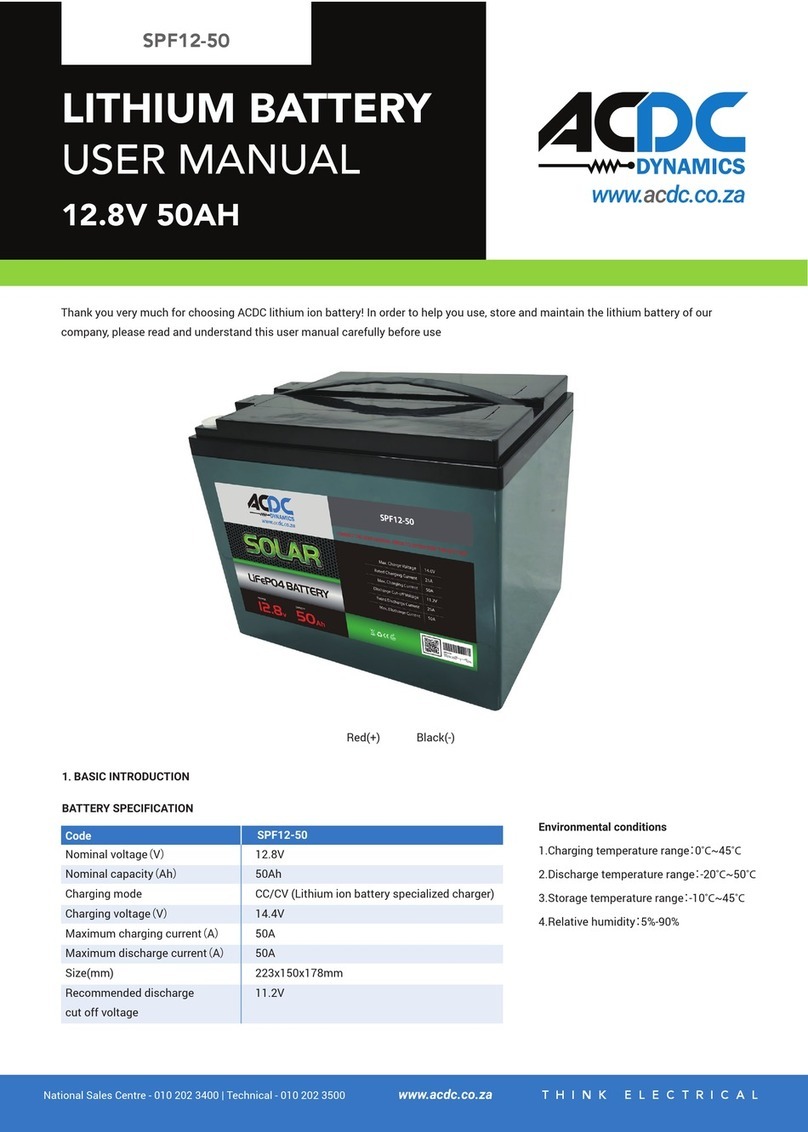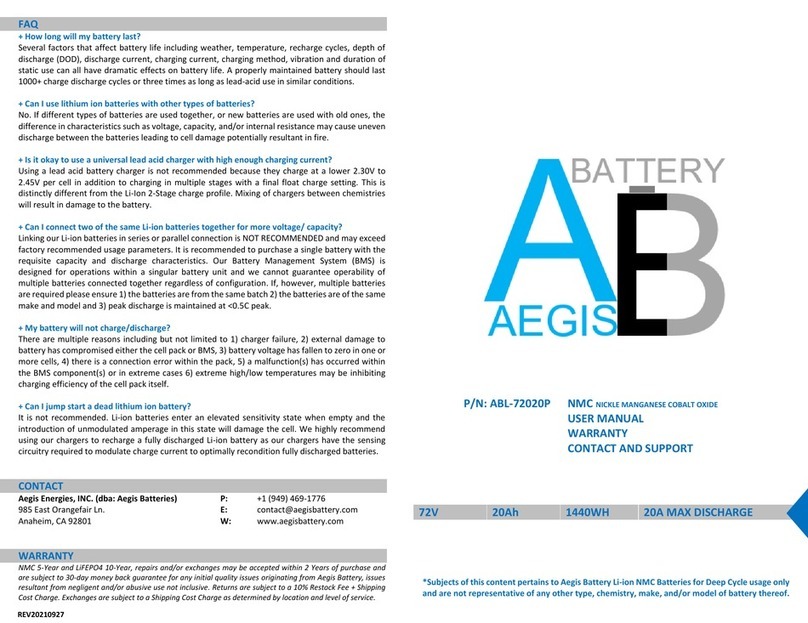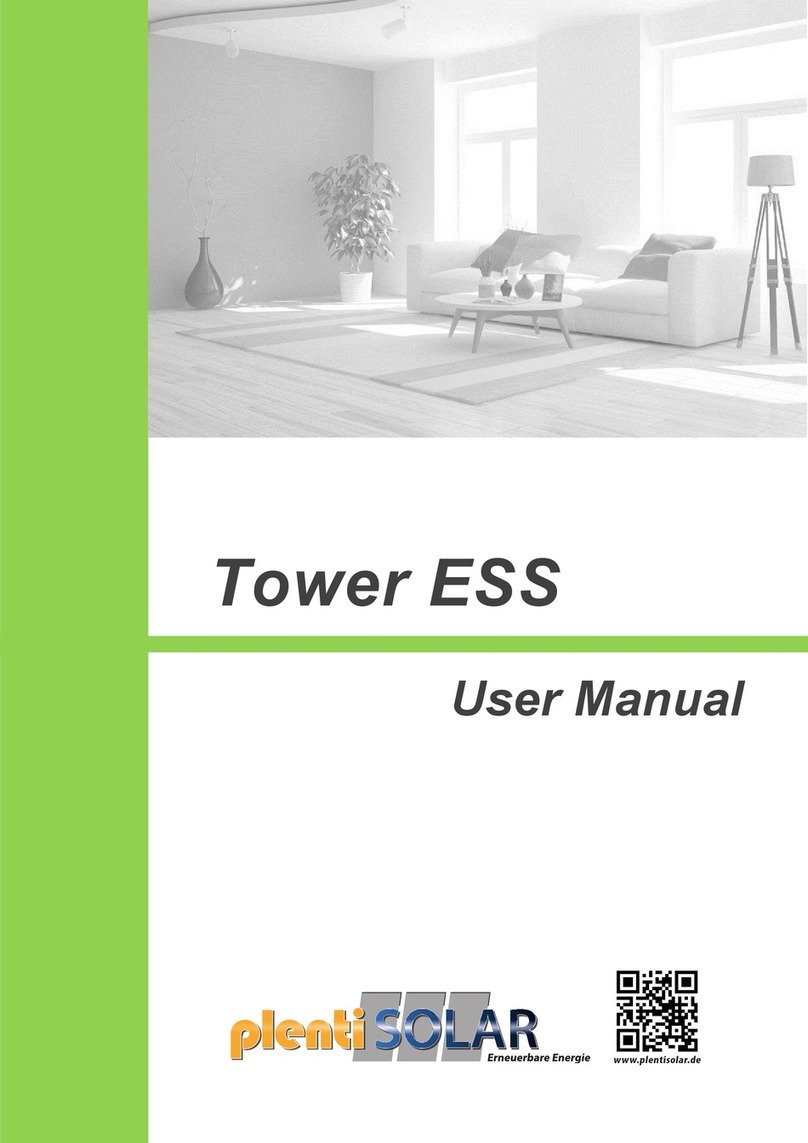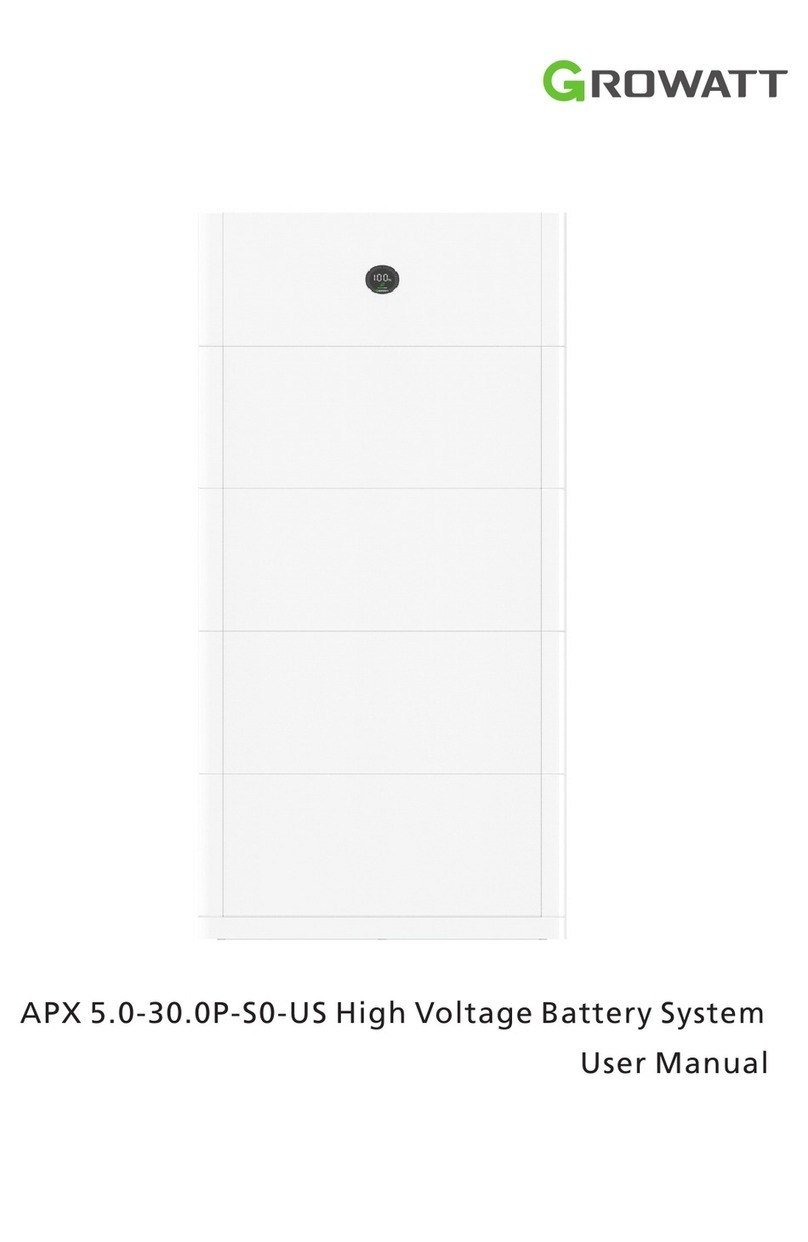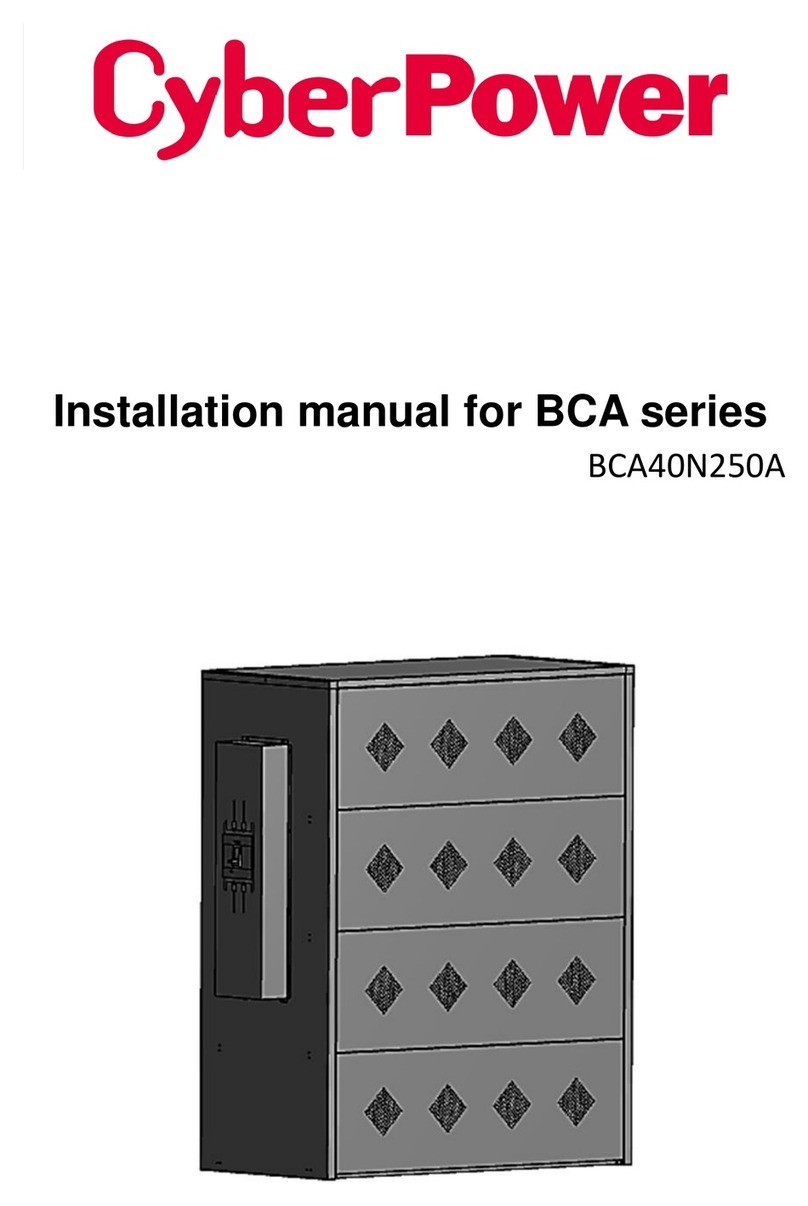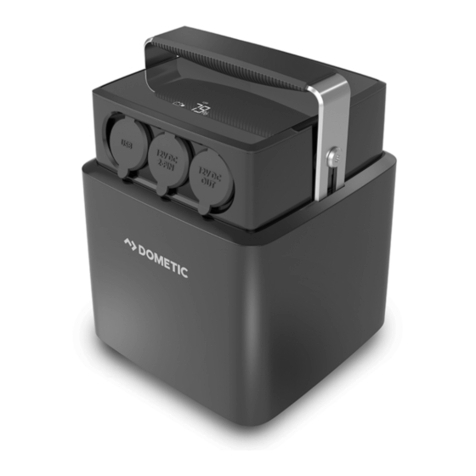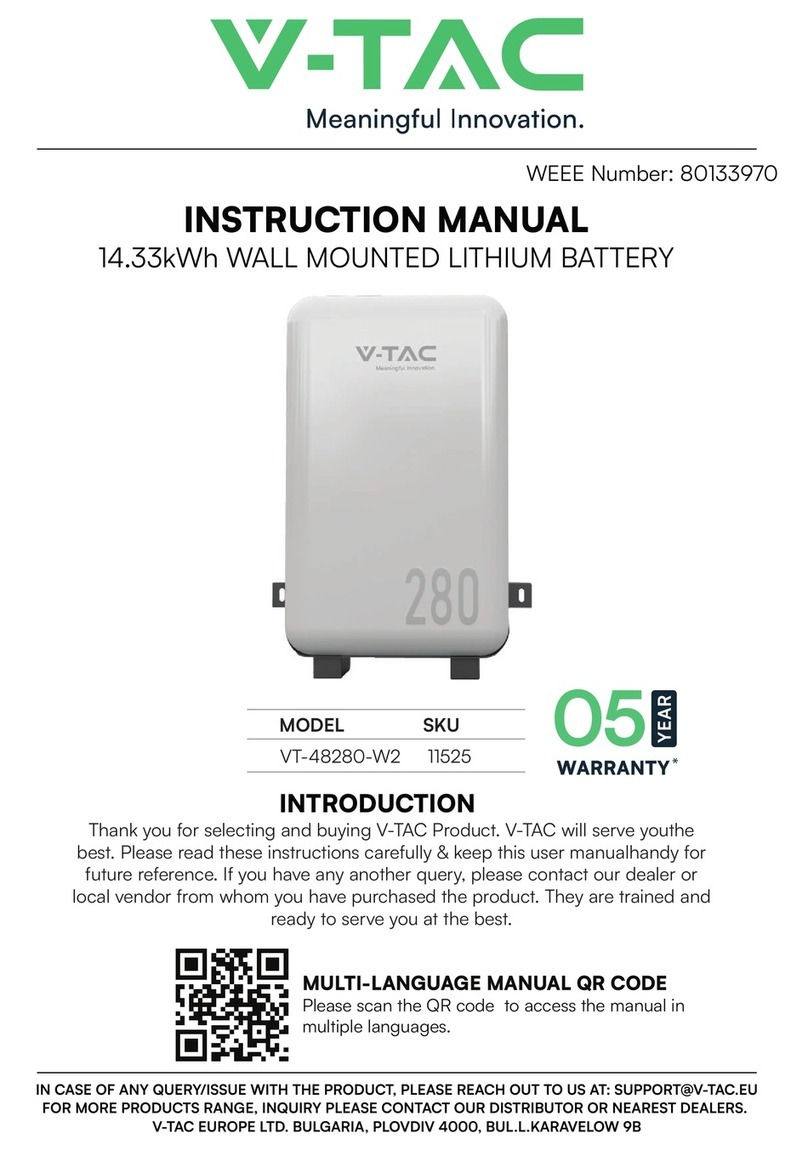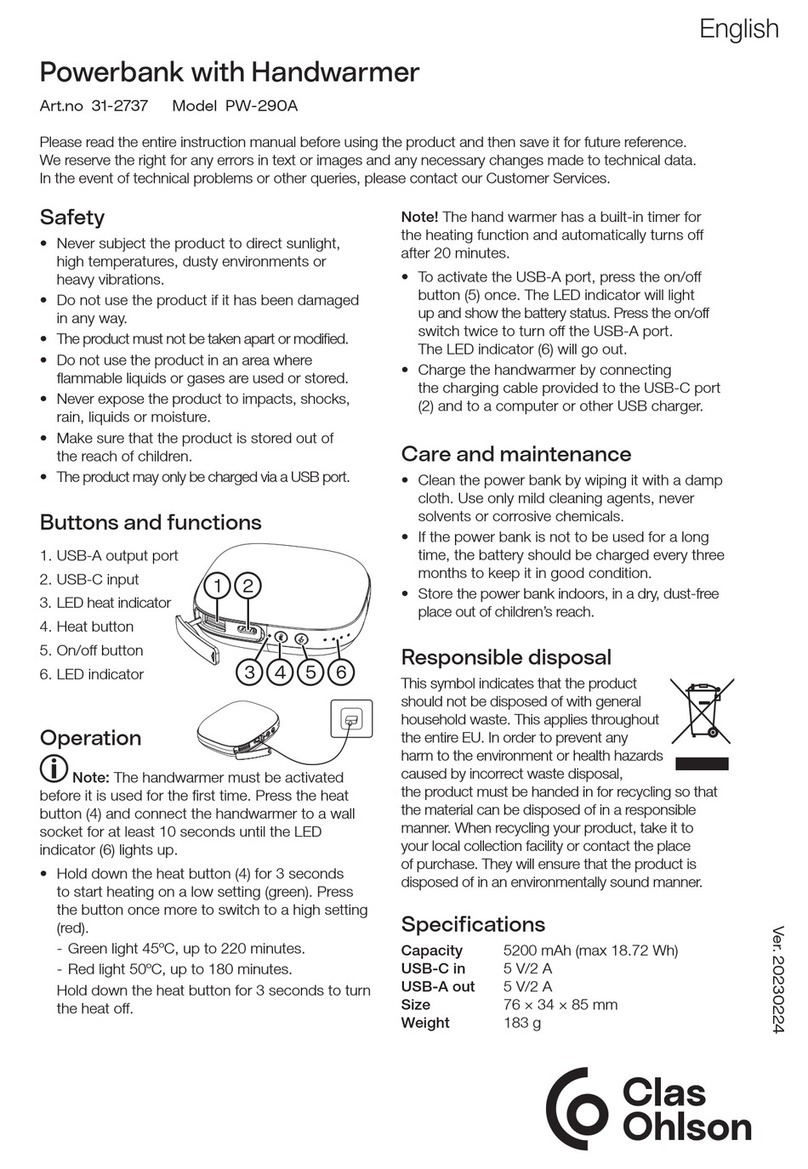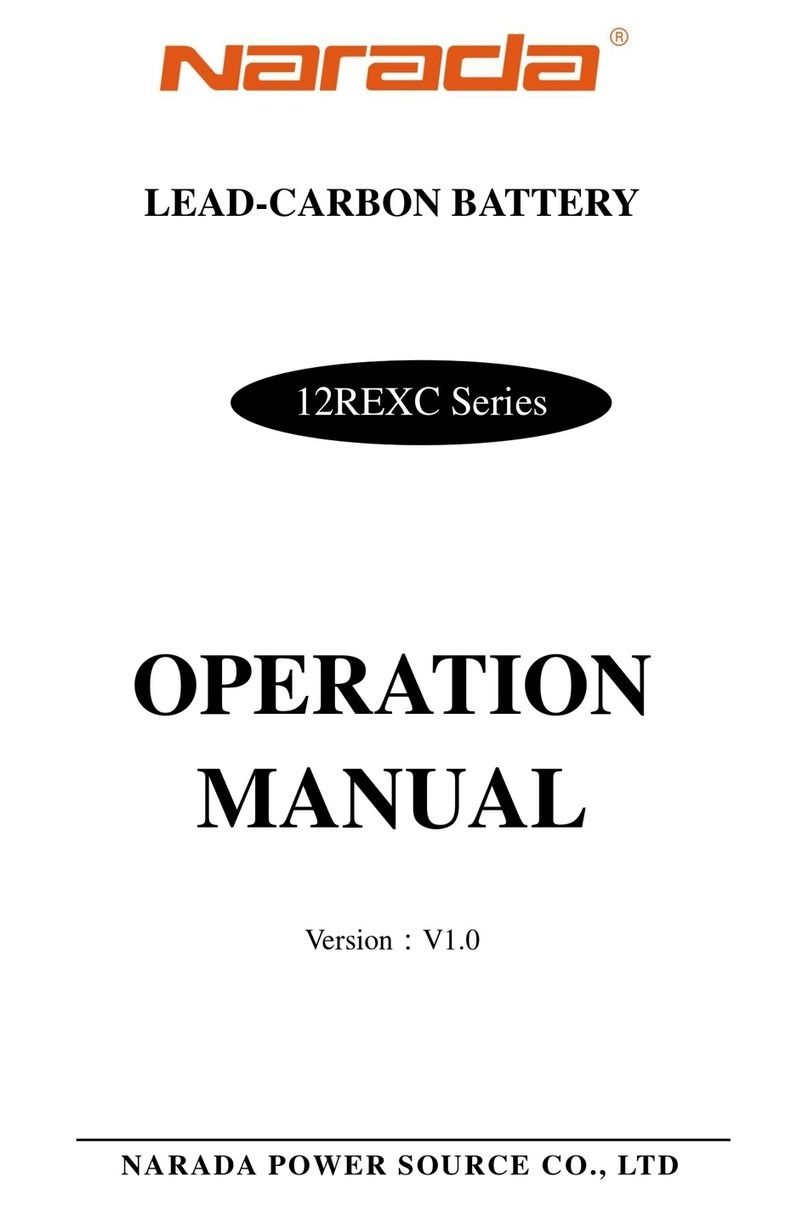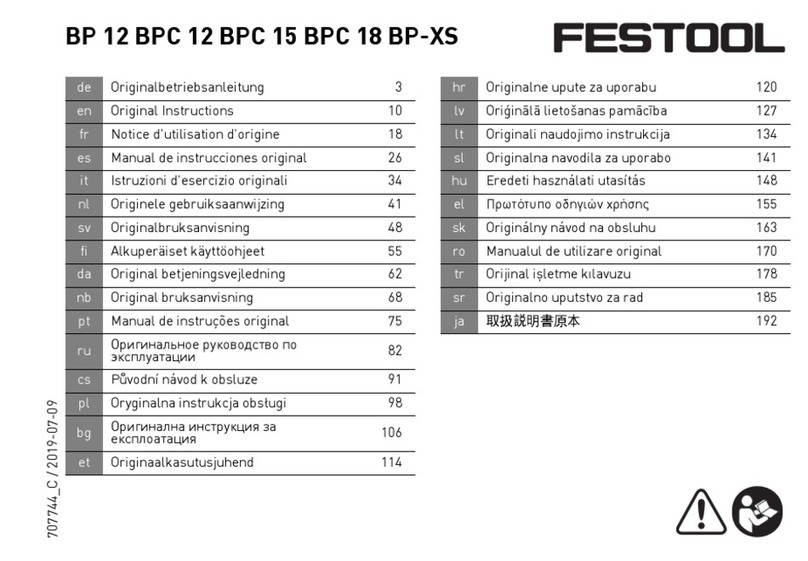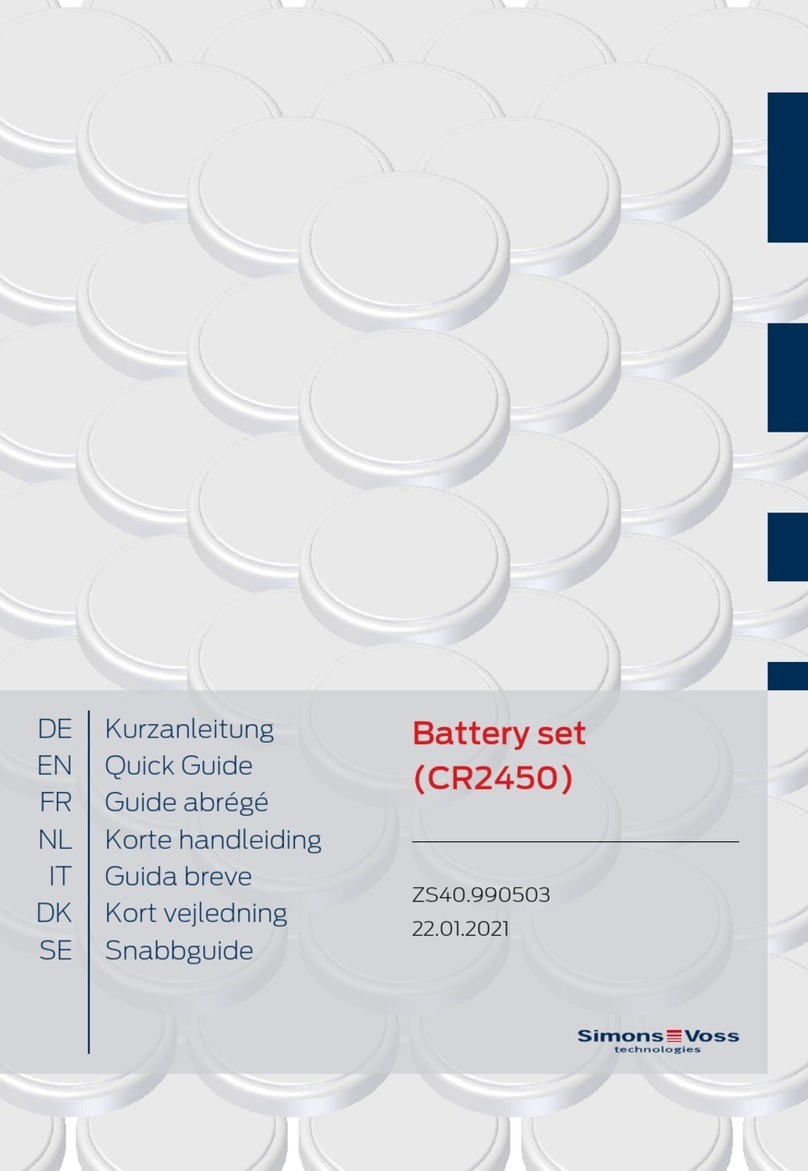
6
7. Discharge
Be sure that all ventilation holes are not sealed or covered. Electrical
connections (e.g. plugs) must only be made or broken in the open
circuit condition. To achieve the optimum life for the battery, operating
discharges of more than 80% of the rated capacity should be avoided
(deep discharge). This corresponds to an electrolyte specic gravity of
1.14 kg/l at 30°C at the end of the discharge.
Discharged batteries must be recharged immediately and must not be
left discharged. This also applies to partially discharged batteries.
It is recommended that the battery is discharged evenly and the use of
tappings across a part of the battery is discouraged. To overcome this
problem a D.C.- D.C. converter must be used to allow auxiliary loads to
be supplied from the whole battery. Note:The D.C.-D.C. converter must
be certied for use in a zoned area as well as the auxiliary equipment.
Battery performance is directly related to temperature. Batteries are
rated at 30ºC. Where the battery temperature is lower than this, the
available performance is reduced. Additional capacity is therefore
required when the batteries are to be used in areas of low ambient
temperatures (e.g. cold stores).
8. Recharge
Note: Never recharge an Ex battery in a zoned area.
Only direct current must be used for charging.
All charging procedures in accordance with DIN 41773-1 and DIN
41774 are permitted. Only connect the battery assigned to a charger,
suitable for the size of battery, in order to avoid overloading of the
electric cables and contacts, unacceptable gassing and the escape of
electrolyte from the cells. In the gassing stage the current limits given
in EN 62485-3 must not be exceeded. If the charger was not purchased
together with the battery it is best to have its suitability checked by the
manufacturers service department. When charging, proper provision
must be made for venting of the charging gases. Doors, battery
container lids and the covers of battery compartments must be opened
or removed. During the charge the battery must be removed from the
closed battery compartment on the truck.The ventilation must comply
to EN 62485-3 standard. The vent plugs should stay on the cells and
remain closed. With the charger switched o connect up the battery,
ensuring that the polarity is correct. (positive to positive, negative to
negative). Now switch on the charger. When charging the temperature
of the electrolyte rises by about 10°C, so charging should only begin if
the electrolyte temperature is below 43°C.
The electrolyte temperature of batteries should be at least +10°C before
charging otherwise a full charge will not be achieved. The charge is
considered as nished when the specic gravity of the electrolyte and
the battery voltage have remained constant for two hours.
Batteries tted with electrolyte mixing (option): If the warning light on
the pump controller is illuminated or if a defect signal on the electrolyte
circulation system appears, check that the piping system is connected
and examine the piping circuit for leaks or defects. (see 6. Maintenance)
The air pipe should never be removed during charge. Excessive
charging reduces battery life, increases water loss from the battery and
wastes electricity. It is important to ensure that charger gassing times
are not extended without prior consultation from your supplier.
The length of the D.C. cable between the charger and battery aects
the voltage drop back to the control unit of the charger. The cable
should not be extended without prior consultation with the charger
manufacturer and supplier of your Ex battery.
In situations where the battery is generally only very lightly discharged,
it may be an option to recharge the battery at less frequent intervals,
perhaps every second day. In such circumstances please seek the
advice or your local service engineer.
Do not disconnect battery until the charger has been switched o.
Your local area service centre must approve any managing charging
system otherwise the warranty may be invalidated.
Equalizing
Some chargers have an equalising facility; either a manual operation
or an automatic control.
For full operational procedures for the charger see manufactures
instruction. But remember never charge an Ex battery in a zoned area
at any time.
Equalising charges are used to safeguard the life of the battery and
to maintain its capacity. They are necessary after deep discharges,
repeated incomplete recharges and charges to an IU characteristic
curve. Equalising charges are carried out following normal charging.
The charging current must not exceed 5 A/100 Ah of rated capacity
(end of charge).
Watch the temperature!
9. Measurement of specic gravity
To take a hydrometer reading the bulb is squeezed, the end of the
rubber tube is dipped into the electrolyte and the bulb is gently
released so as to draw up sucient liquid so that the oat moves freely.
The hydrometer must be held in a vertical position and there should
be no pressure on the rubber bulb. When reading the hydrometer to
measure the specic gravity, the liquid level shows the value on the
scale, which is printed on the oat. After reading, the rubber bulb
should be squeezed to return the electrolyte to the cell.
The rated specic gravity (S. G.) of the electrolyte is related to a
temperature of 30°C and the nominal electrolyte level in the cell in fully
charged condition. Higher temperatures reduce the specied gravity
of the electrolyte, lower temperatures increase it. The temperature
correction factor is -0.0007 kg/l per °C, e.g. an electrolyte specic
gravity of 1.28 kg/l at 45°C corresponds to an S.G. of 1.29 kg/l at 30°C.
The electrolyte must conform to the purity regulations in IEC 62877-
2:2016.
10. Temperature
An electrolyte temperature of 30°C is specied as the rated
temperature. Higher temperatures shorten the life of the battery,
lower temperatures reduce the capacity available. 55°C is the upper
temperature limit and is not acceptable as an operating temperature.
The temperature on surface must never exceed 80°C in explosive area.
Charging should only begin if the electrolyte temperature is below
43°C. If electrolyte temperature reaches 55°C during the charge, wait
for the cooling before to use the battery in the explosive area. If a hot
battery is detected it should be taken out of the controlled zoned area
and allowed to cool to ambient temperature.
An investigation should be carried out into why the battery is getting
hot before it is placed back into service. Possible reasons why the
battery might be getting hot is that there might be a fault in the
equipment that the battery is powering or a fault could have occurred
within the cells of the battery. In the case of a suspected battery
problem contact your local service centre.
11. Surrounding area conditions
The apparatus is designed to cope with the intended surrounding area
conditions.
12. Eect of explosive atmosphere on materials
The materials selected are not known to react with any explosive
atmospheres to which the apparatus may be subjected.
13. Protection against other hazards
The apparatus does not cause injury or harm when used as specied in
the installation and operation manual.
14. Hazards arising from dierent ignition sources
The apparatus does not produce ignition capable electrical sparks or
arcs. The apparatus has also been designed not to produce potential
ignition sources from electromagnetic, acoustic, optical or other such
external energy sources.
15. Withstanding attack by aggressive substances
The individual cells contains sulphuric acid: These cells and enclosure
which make up the apparatus are constructed from materials that are
resistant to acid attack see manufactures data sheet.
16. Care of the battery
The battery should always be kept clean and dry to prevent tracking
currents. Any liquid in the battery tray must be extracted and disposed
of in the prescribed manner.
Damage to the insulation of the tray should be repaired after cleaning,
to ensure that the insulation value complies with EN 62485-3. and to
prevent tray corrosion. If it is necessary to remove cells it is best to call
in our service department for this.
17. Storage
If batteries are taken out of service for a lengthy period they should be
stored in the fully charged condition in a dry, frost-free room. To ensure
the battery is always ready for use a choice of charging methods can
be made:
1. a monthly equalising charge as in point 8, or
2. oat charging at a charging voltage of 2.27 V x the number of cells.
The storage time should be taken into account when considering the
life of the battery.
18. Malfunctions
If malfunctions are found on the battery or the charger our service
department should be called in without delay. The measurements
taken in point 6.3. will facilitate fault nding and their elimination. A
service contract with us will make it easier to detect and correct faults
in good time.





